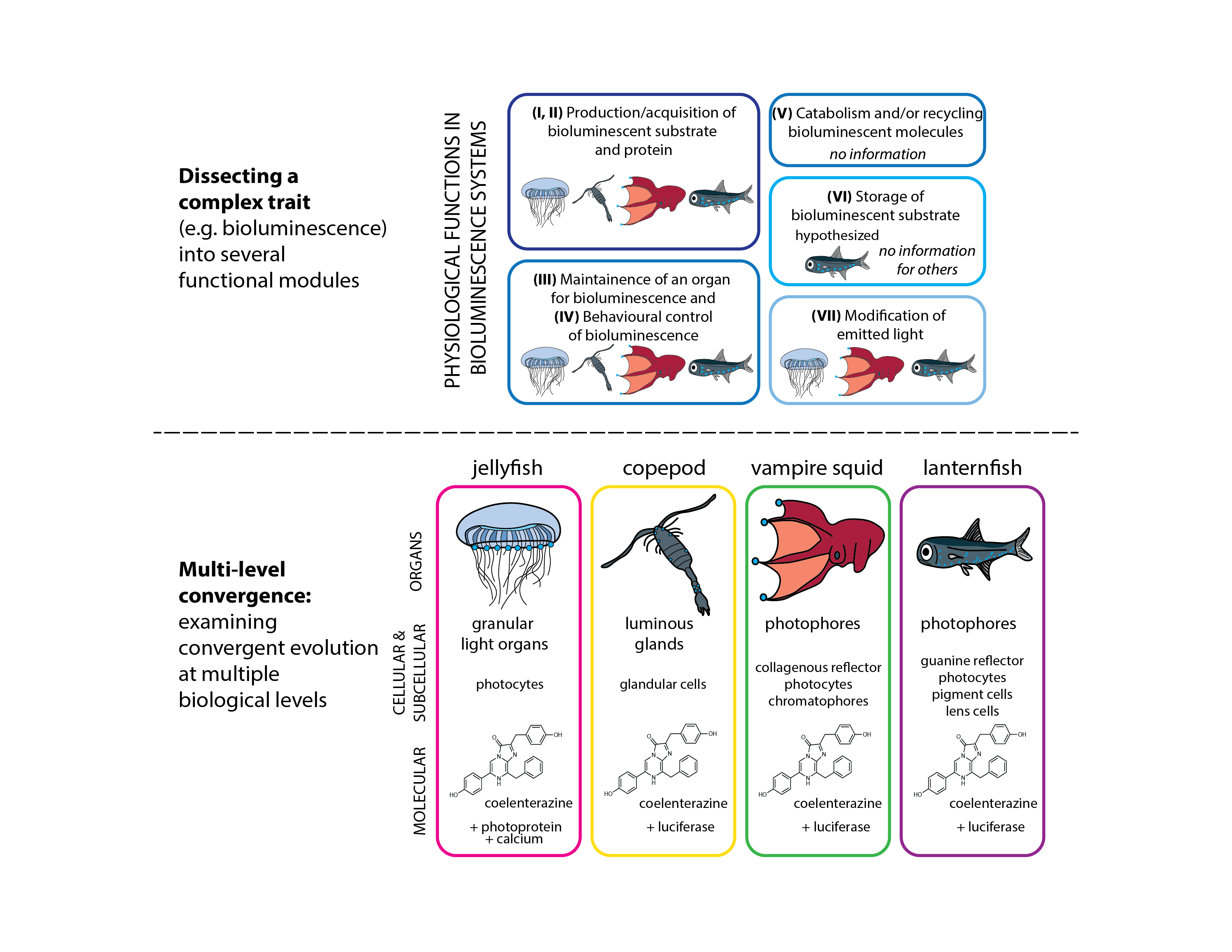Evolutionary convergence provides natural opportunities to investigate how, when, and why novel traits evolve. Many convergent traits are complex, highlighting the importance of explicitly considering convergence at different levels of biological organization, or ‘multi‐level convergent evolution’. To investigate multi‐level convergent evolution, we propose a holistic and hierarchical framework that emphasizes breaking down traits into several functional modules. We begin by identifying long‐standing questions on the origins of complexity and the diverse evolutionary processes underlying phenotypic convergence to discuss how they can be addressed by examining convergent systems. We argue that bioluminescence, a complex trait that evolved dozens of times through either novel mechanisms or conserved toolkits, is particularly well suited for these studies. We present an updated estimate of at least 94 independent origins of bioluminescence across the tree of life, which we calculated by reviewing and summarizing all estimates of independent origins. Then, we use our framework to review the biology, chemistry, and evolution of bioluminescence, and for each biological level identify questions that arise from our systematic review. We focus on luminous organisms that use the shared luciferin substrates coelenterazine or vargulin to produce light because these organisms convergently evolved bioluminescent proteins that use the same luciferins to produce bioluminescence. Evolutionary convergence does not necessarily extend across biological levels, as exemplified by cases of conservation and disparity in biological functions, organs, cells, and molecules associated with bioluminescence systems. Investigating differences across bioluminescent organisms will address fundamental questions on predictability and contingency in convergent evolution. Lastly, we highlight unexplored areas of bioluminescence research and advances in sequencing and chemical techniques useful for developing bioluminescence as a model system for studying multi‐level convergent evolution.

